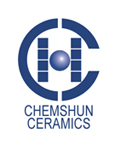Top articles
- High-purity 99.7% alumina ceramics helpful to semiconductor manufacturing technology
- Alumina Ceramic Grinding Balls: High-Efficiency Solutions for Industrial Grinding
- How to Select Suitable Wear-Resistant Ceramic Lining Tiles in the Mining Industry
- Advantages of Ceramic Rubber Composite Liners in Industrial Applications
- How to Install Alumina Ceramic Liners for Long-Lasting Adhesion?
- 99% alumina bulletproof ceramics are the preferred materials for protective devices
- Alumina Ceramic Substrates:Characteristics,Advantages,Disadvantages,and Applications
- Why do alumina industrial ceramics wear out?
- The reason of abrasion resistant ceramic tiles falling off when pasted on equipment
- Seven aspects of advantages & applications of alumina ceramic substrates
Latest articles
- High-purity 99.7% alumina ceramics helpful to semiconductor manufacturing technology
- Alumina Ceramic Grinding Balls: High-Efficiency Solutions for Industrial Grinding
- How to Select Suitable Wear-Resistant Ceramic Lining Tiles in the Mining Industry
- Advantages of Ceramic Rubber Composite Liners in Industrial Applications
- How to Install Alumina Ceramic Liners for Long-Lasting Adhesion?
- Welcome to EXPOMIN 2025
- 99% alumina bulletproof ceramics are the preferred materials for protective devices
- Alumina Ceramic Substrates:Characteristics,Advantages,Disadvantages,and Applications
- Why do alumina industrial ceramics wear out?
- Chemshun Ceramics Chinese New Year Holiday Notice
Your browsing history

Aluminum Oxide and Alumina Ceramics Information
Alumina (Al2O3) is one of the most widely specified, general-purpose technical ceramics.Aluminum oxide (Al2O3) is a compound ofaluminum metaland oxygen used in the alpha alumina structural form. It is commonly referred to as alumina, a white high-hardness ceramic. Fully-dense alumina can be translucent. Aluminum oxide and alumina ceramics have excellent wear characteristics, chemical resistance, compressive strength, high-temperature properties, and dielectric strength. They are used widely because of their versatility and low cost. The main drawback is its relatively poor thermal-shock resistance due to higher coefficients of thermal expansion and lower thermal conductivity (compared to other pure ceramic materials).
Types
Examples include calcium aluminate, sapphire, and alumina-zirconia.
Calcium aluminate(CaAlO3) is an aluminate ceramic used inrefractory cementsand shapes, as well as synthetic slag additions for metallurgical operations.
Sapphireis a high-purity and high-density, single-crystalline form of aluminum oxide that may contain chromia, titania, yttria, or other dopants. Sapphire is usually transparent or translucent.
Zirconia-toughened alumina(ZTA) and other zirconia-alumina ceramics are often used in wear applications as an intermediate solution between alumina and zirconia. ZTA offers increased fracture toughness over alumina at a lower cost compared to pure or high zirconia ceramics.
Commercial Grades of Alumina
There are many different commercial grades of alumina. Examples include smelter-grade, calcined, low soda, reactive, tabular, fused, and high-purity.
Smelter aluminais used in the manufacture of aluminum metal, typically in fluid bed or fluid flash calciners.
Calcined aluminamay use mineralizing catalysts and contain sodium oxide as the main impurity. They improve the performance of both shaped and monolithic refractories.
Low soda aluminais used mainly in electrical and electronic components.
Reactive aluminahas a relatively high purity and small crystal size. It is used in the production of high-performance refractories that require defined particle packing and consistent placement characteristics.
Tabular aluminais re-crystallized or sintered alpha alumina. It is used in shaped and unshaped refractories for steel, cement, foundry, glass, petrochemical, and waste incineration applications. Non-refractory applications for tabular alumina include its use in kiln furniture and for metal filtration.
Fused aluminais made in electric arc furnaces. The fused mass is then crushed and sized to meet application requirements.
High-purity aluminais used in the manufacture of synthetic gem stones, laser components, and instrument windows.
Applications
Depending on the purity and density, alumina is used for:
Abrasives
Analytical labware
Crucibles
Refractory cements
Refractory tubes
Wear components
Typically, these alumina abrasives are used in sand blasting, polishing, and surface preparation. For example, aluminum oxide grit powder is used to clean engine heads, valves, pistons, and turbine blades. Aluminum oxide abrasive grains are also used in metallizing, plating, and welding operations.








